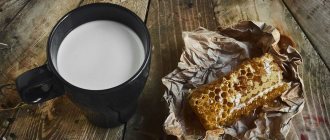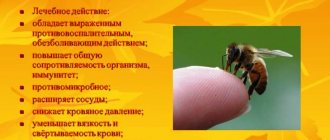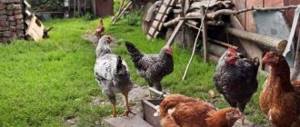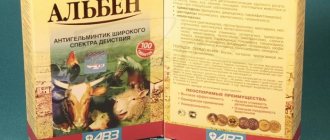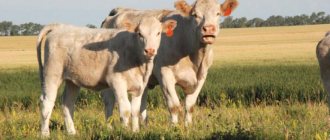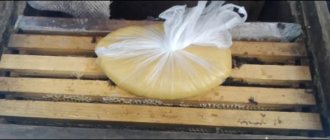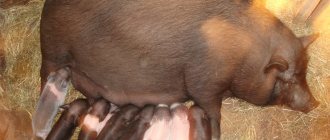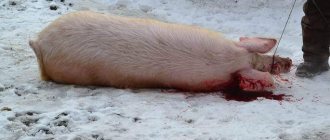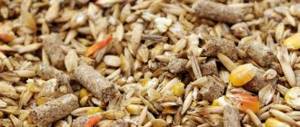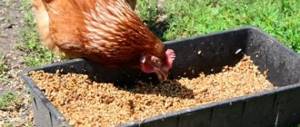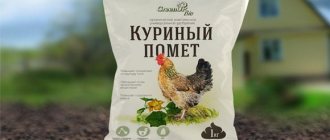Who is given the pumpkin?
The fodder variety of pumpkin is considered a technical vegetable. It differs in size and appearance, but sowing is carried out in the same time frame as for table crops.
The main purpose is feeding farm animals, so the choice of variety depends on the required amount of harvest.
The product is added to the diet of pigs, cows and chickens. It ensures weight gain and introduces essential vitamins and microelements into the diet. But you can’t feed animals only this: excess fiber leads to digestive disorders.
In addition to livestock, this vegetable is useful
Bioadditives, premixes for feeding piglets. Vaccinations.
Beneficial active substances that are not contained in the normal diet of pigs must be supplied in the form of dietary supplements - premixes. Supplements have been developed for each age of pigs. The introduction of such additives can significantly reduce feed consumption.
- Bioadditive "Borka" for piglets improves immunity and increases weight gain. It contains vitamins, macro and microelements; this premix does not contain antibiotics, growth stimulants or hormones.
- “The Good Villager” not only increases weight gain, but also removes worms and improves the health of pigs. In pigs fed with this additive, the taste of meat improves.
- “Gift of Veles” is a supplement created specifically for piglets. Promotes better absorption of feed.
- "Borka Champion" - created for accelerated feeding. Weight gain increases by 20%, and fattening time is reduced by a month. It also serves as a means of preventing rickets and anemia.
Premixes are given to animals only as additives according to the instructions; they cannot replace food.
Pig breeding is impossible without preventive vaccinations. The piglet receives the first injection on the third day of life, this is an iron supplement to prevent anemia. At ten days of age, the pig is vaccinated against rickets, at the twentieth day it is vaccinated against salmonella, and an anti-plague vaccine is administered at the same time. A month later, this vaccination is repeated. The introduction of the vaccine against erysipelas is recommended at 2 months, and against swine foot and mouth disease, piglets are vaccinated at 2.5 months.
The best varieties
Pumpkin silage.jpg 90w, https://pro100ogorod.ru/wp-content/uploads/2019/03/polivat3-300×225.jpg 300w" sizes="(max-width: 600px) 100vw, 600px" /> For pumpkins are easy to care for
Among those there are popular types. They are unpretentious in care and produce a high yield in a private garden. These include:
- A hundred pound. An unpretentious variety that grows throughout Russia. Late ripening. Large-fruited species - size depends on care. Loves warmth. Color orange or yellow. Average weight – 9 kg. The pulp is moderately sweet, if
Other options
/li>
- Nut. Versatile, with a lot of seeds inside. The pulp is loose with a neutral taste. It responds well to organic fertilizers and produces a harvest by the end of summer. It has a long shelf life.
- Hybrid 72. Large-fruited mid-season variety. The bush is distinguished by long vines and powerful foliage. The fruits are round, spherical in shape. The weight of one vegetable is from 6 to 9 kg. The pulp is yellow, loose. Vegetable n
Is it possible to give zucchini to piglets?
They are harvested 10 days after fruit set. At this time, each fruit weighs from 0.5 to 1 kg. The green fruits are well-executed, tender, very readily eaten by pigs and are a valuable dietary food. Overripe fruits are hard and less easily eaten by piglets. The overall nutritional value of zucchini is close to that of watermelons: 100 kg of zucchini contains 7 feed units and 0.6 kg of digestible protein.
Zucchini is also fed to piglets in crushed form mixed with green grass and concentrated feed. Adult pigs eat an average of up to 15 kg of zucchini per day. Zucchini is very valuable because from mid-summer until late autumn they constantly provide fresh, juicy food. Due to the fact that zucchini is fed green, they begin to be used earlier than other succulent foods.
Price for fodder pumpkin
quantity.
The maximum daily dose is about 19 kg. They also mix the puree with legumes: the combination helps to prolong the feeling of fullness in pigs or cattle. Complementary feeding begins at six months of age.
On average, vegetables account for 30% of the diet weight. The weight gain with a balanced diet with the addition of purees is about 900 g per day.
Pumpkin ensiling
Ensilage is a simple process that allows you to preserve useful components for animals in
It is carried out with healthy and affordable ingredients. What to add to silage:
- leaves (tops);
- flour;
- hay;
- legumes
The percentage of the main component must be at least 60. The main raw material is cut or grated, placed in dense containers and closed.
But in the silage the carotene content is reduced to 20 mg. If mixed with legumes, maintain a proportion of 70% legumes and 30% vegetable mass. Such a bookmark must be sealed.
The danger of this method is that if stored improperly, the pumpkin may rot or become moldy. Use only sterile containers and store the product for no more than 2 months.
Other options
To make a pet's diet correct, use boiled, raw and even dry pumpkin. Heat treatment does not affect the composition.
If you plan to fight helminths, use ground seeds. Meal is also useful for prevention.
- Dogs are given pumpkin porridge with rice and herbs.
- Stewed pumpkin with zucchini is suitable for feeding cats.
Dried is added to ready-made food or to porridge during cooking. Frozen pulp does not lose useful components.
Pumpkin powder is a beneficial option for pets who are sick in the winter. It is made from portioned dry pulp, grinding in a coffee grinder. Store in a metal container.
[dzs_videogallery]
General principles of pig feeding
When fattening pigs, various products are used. Their goal is to provide the animal with energy and nutrients - proteins, carbohydrates, fats.
All products are divided into three groups, which have different effects on the quality of the final product.
Attention! Two months before slaughter, products belonging to the third group are completely removed from the diet, and the presence of the first is maximized.
Concentrated feed
This includes cereals, bran, legumes, and waste from grain processing. They are a source of energy, and legumes supply protein to the body.
Barley is considered the most popular fattening crop. Its digestibility reaches 80%, it is readily eaten by pigs and has a positive effect on the taste of meat.
From other crops they use:
- oats - only in the early stages;
- millet;
- corn - given in combination with protein-containing feed;
- peas are a source of protein, fed steamed;
- meal and cakes (flaxseed, soybean, sunflower) - a source of vegetable fats, must be steamed before use for at least 4 hours;
- bran - used to a limited extent due to the abundance of fiber.
Such feeds are given crushed. This, in particular, improves the absorption of the product.
Attention! Dry finely ground turf disrupts the functioning of the stomach and intestines, even leading to ulcers. Therefore, it is given only with table waste or juicy food.
Grain feed is not boiled, as this destroys the active substances. Legumes must be cooked because they are poorly digestible raw.
Juicy feed
One of the most valuable crops is potatoes, the digestibility of which reaches 94%. It is fed with protein-containing feed - peas and other legumes, skim milk. First, the root vegetable is cooked until tender.
Also give:
- beets - table and sugar, always boiled;
- carrots - added as a source of vitamins for suckling piglets;
- pumpkin - useful for all age groups of pigs.
Food waste
Fattening pigs allows for the use of food waste. It can be:
- fresh remains of uneaten food by humans;
- bread crumbs: waste from cutting animals and fish;
- vegetables - raw, boiled;
- cleaning root vegetables and fruits.
Attention! A few weeks before slaughter, fish waste is excluded from the diet, as it gives the meat an unpleasant taste.
All food waste is collected in clean containers and given as is.
You can also give:
- acorns - from 2 kg per day per individual;
- edible mushrooms, boiled or dried, as part of mash (source of protein).
Green feed
Nettle occupies a huge place in pig nutrition. This is an affordable multivitamin food that is found in the wild - forests, parks, plantings, alder forests. It is easy to prepare nettles for the winter by drying the young shoots. The norm for an adult animal per day is 300 g.
Attention! The grass must be freshly cut, because already 6 hours after chopping, the amount of nutrients in it is halved. The herb can cause intoxication if it is brewed and left in water to cool.
Another valuable crop is rapeseed, a storehouse of proteins and fats. Its cake increases the growth rate of pigs by 4%, and the profitability of production by 3.4% compared to its sunflower counterpart. The crop is superior to soybean in terms of phosphorus, calcium, magnesium and copper content.
Also applicable:
- “Zelenka” is crushed leaves and grass of clover, alfalfa, peas, quinoa, nettle, beet tops, vetch, and oats. These products are rich in protein, vitamin compounds, and minerals.
- Combined silage is the winter equivalent of greens. It is prepared from fresh grass, vegetable waste, root crops (30–50% each), chaff, hay (grass) flour and carrots (10% each).
- Dry young grass and hay ground into flour.
Animal feed
Healthy foods of animal origin include:
- Milk. Only suckers receive it in its pure form; adults are given buttermilk, skim milk, and whey.
- Fish and meat are a source of protein. Fish is excluded from the diet 1.5-2 months before slaughter, so as not to spoil the taste of pork.
Attention! Before feeding, the fish must be boiled.
Supplements
In recent years, scientists have been talking about the benefits of aromatic and flavoring additives. These drugs irritate the receptors, improve the secretion of gastric juice and digestion.
Taste buds are activated by:
- aromatic oils - citrus fruits (orange, lemon, tangerine), seasonings of cinnamon, bay, garlic, mint, onion, caraway, dill, sage and other plants;
- products that contain these oils - mint, anise seeds, vanilla, waste from cocoa bean processing.
Pigs prefer sweets. To please their taste buds, sugar (2.5%) and ground dried beets (up to 5% of the feed) are added to the food.
They prefer sour to alkaline taste. To create it, various acids of organic and inorganic origin are used - acetic, lactic (0.4%). Bitterness comes from mustard seeds (0.15%) or calcium chloride (0.4%) ground into powder.
Alternating sweet, sour, and bitter helps maintain normal appetite and improves the absorption of nutrients, reducing feed consumption. Citric acid is one of the necessary additives.
Once in the body, the substance performs several functions: it slightly reduces the likelihood of infection; normalizes pH value; improves food digestion; normalizes microflora.
Enrichment of feed with this organic compound allows increasing live weight gain by 9-17%. The optimal concentration is 1%.
Antibiotics are added to feed in small doses. This reduces the incidence rate and also increases the average daily weight gain by 15%. After consultation with a veterinarian, Terravit-40, Biovit-20, BKV, BVK and others are used to stimulate growth.
Feeding mode
Feeding can be rationed, limited, or non-rationed. Under normal conditions, weanlings and growing piglets are given food three times a day, unless otherwise specified by the technology rules.
The same applies to fattening pigs, but they are offered regular feed twice and roughage once.
Important! With rationed feeding, the farmer has to monitor the appetite of the herd, and based on this, calculate the next portion.
The irregular regime is suitable for piglets that have just been weaned from the sow. This is explained by the rapid growth and development of the body, which requires more nutrients and energy than at other ages. Piglets are given constant access to feeders filled with food.
The limited mode is used when fattening for meat, when they want to minimize the fat content in the carcass. Then they use insufficient feeding or replace regular food with rough or less nutritious food.
Can it be eaten by humans?
Technical varieties can be eaten by both animals and people. But this subspecies is not as tasty as the table variety, but no less healthy. It is better to prepare the pulp before consuming it so that it becomes sweeter and has a pleasant structure:
- To reduce the amount of moisture, the pulp can be boiled and drained in a colander. If you use syrup instead of water, you can increase the sweetness.
- It is better not to use (not consume) forage varieties for dietary nutrition. It will be difficult to accustom a child to tasteless technical grade complementary foods.
- The composition and taste of a vegetable directly depends on its type. Therefore, one should not expect high culinary properties from purely forage crops.
What grass can be given to piglets and pigs
It is recommended to feed piglets plants with a protein to carbohydrate ratio of 1:2.5 - 1:3.5. It is preferable to give legumes, such as:
These crops are rich in vitamins, proteins and minerals, which are very important for fattening pigs.
Of the crops listed, alfalfa is best suited. When they reach a height of 10-15 cm, piglets can eat it without restriction.
Note! Younger grass contains more proteins, but their content decreases over time. During the flowering period, alfalfa becomes coarse, and animals are no longer as willing to eat it.
Little pigs also really like clover, and besides, the young shoots contain a lot of protein and fiber.
Cruciferous vegetables (cabbage, rapeseed, turnip) are also beneficial for piglets. Fast-growing rapeseed is the best option for feeding these animals. Pigs of any age love it. This plant contains a lot of sulfur, due to which the digestive system of piglets works much better. Cabbage is used as feed less often and in small quantities. Before slaughter, they stop feeding cabbage about a month before, otherwise the meat will acquire a sour taste. For turnips, the tops are first fed, and then the roots themselves.
Almost from birth until slaughter, piglets are also given the following green herbs: nettle, quinoa, vetch, burdock, as well as dandelion, peas, clover, alfalfa, beet tops, pumpkin and zucchini leaves. In the summer, these herbs are visible and invisible all around, which significantly reduces the cost of meat.
Many novice breeders do not know how to give nettles to piglets. If it has already outgrown, then it must be brewed, but young ones can simply be chopped in a trough and mixed with other feed. Nettle can also be dried, crushed and added to feed. A pig should receive about 8 kg of greens per week. This amount is enough to better absorb food, as well as grow and develop faster. By eating green mass, the quality of pork improves.
Nettle for piglets
Also, many people are concerned about whether it is possible to give spurge to pigs (since there are many poisonous species in the spurge family). The answer is simple: yes, you can. In addition to milkweed, piglets can be given almost any weed from the garden: sow thistle, clover, quinoa. Speaking of swan. It is considered a poisonous herb, but during the war it saved many lives, and cattle still eat its delicate silky stems and leaves. So the question of whether it is possible to give quinoa to piglets disappears by itself. In addition, piglets have a well-developed sense of smell, and they will not eat harmful grass, but will eat the one they need at the moment.
You can prepare many herbs for future use at home. They can be dried (best in the shade), crushed and stored in a closed container.
Important! To replenish vitamin C reserves, piglets can be given sorrel in small quantities. Fresh green feed should be 30-40% of the total daily diet.
Feeding from 4 months
Pigs that reach a weight of 50 kg begin to be fattened on a special diet, depending on what result they ultimately want to get. Three feeding options are being considered:
- meat;
- greasy condition;
- with layers.
The rate of weight gain during this period is 650 - 700 g. By the age of six months, the pig usually reaches a weight that is approximately equal to a hundredweight, or even more, about 4-5 feed is consumed for each kilogram of weight. units
As a rule, “single” pigs are kept at home, but there are also amateur pig farmers who raise mother pigs to increase the number of pigs and their further sale. Pregnant and lactating sows require special care and balanced feeding.
As a rule, “single” pigs are kept at home, but there are also amateur pig farmers who raise mother pigs to increase the number of pigs and their further sale. Pregnant and lactating sows require special care and balanced feeding.
